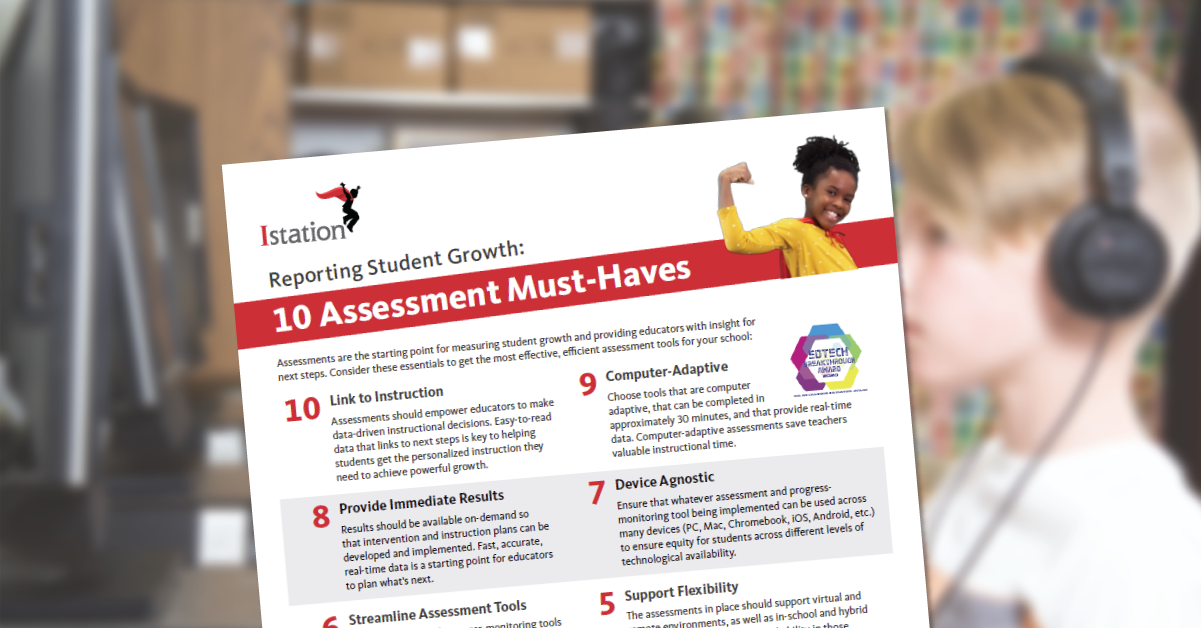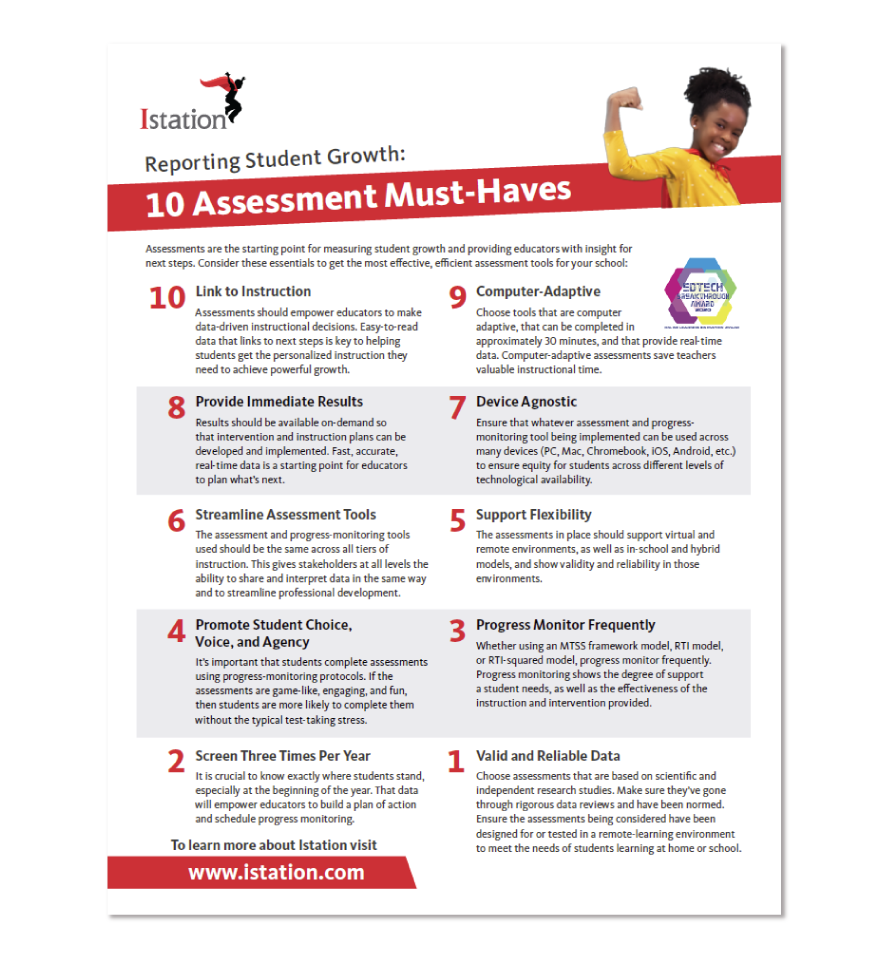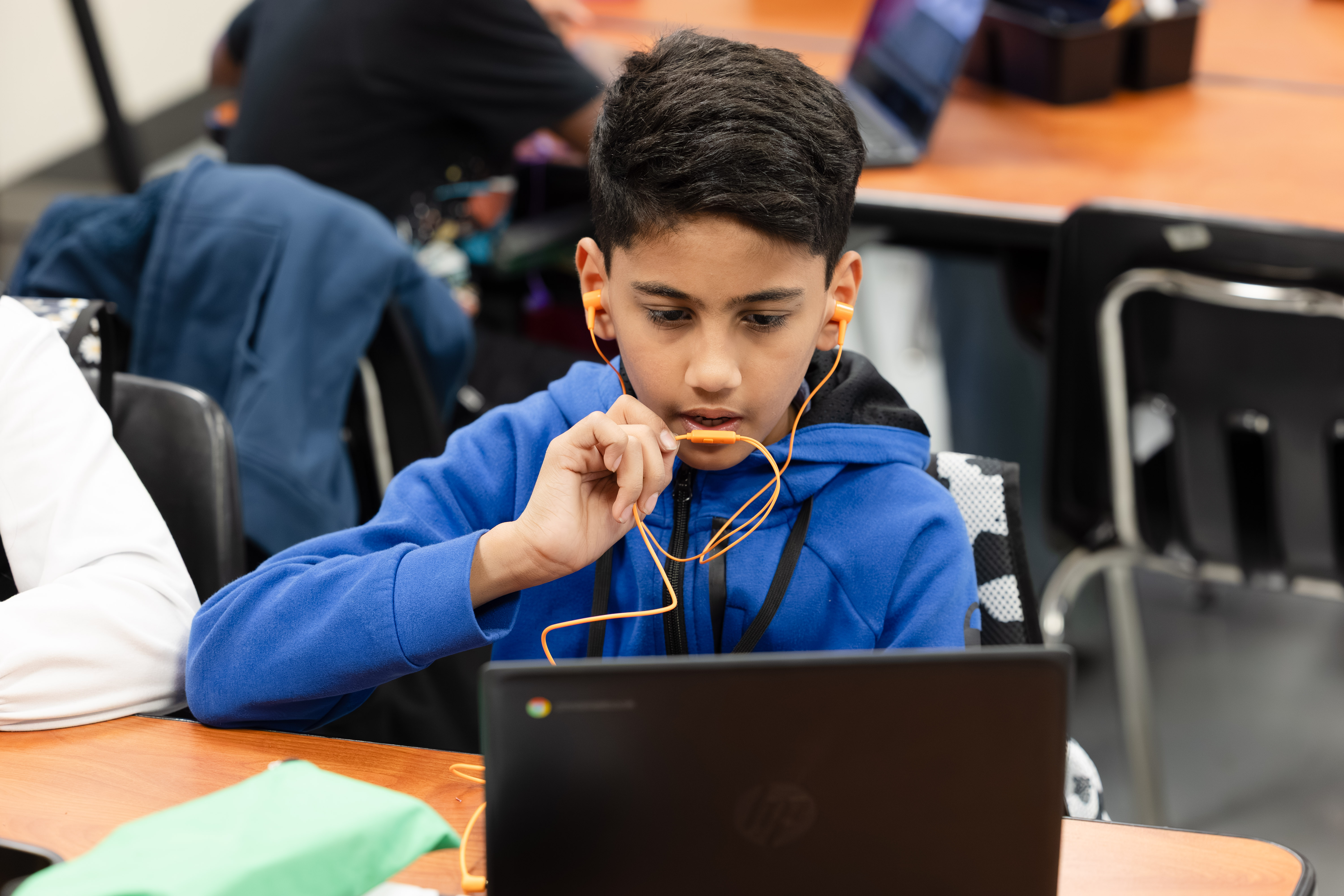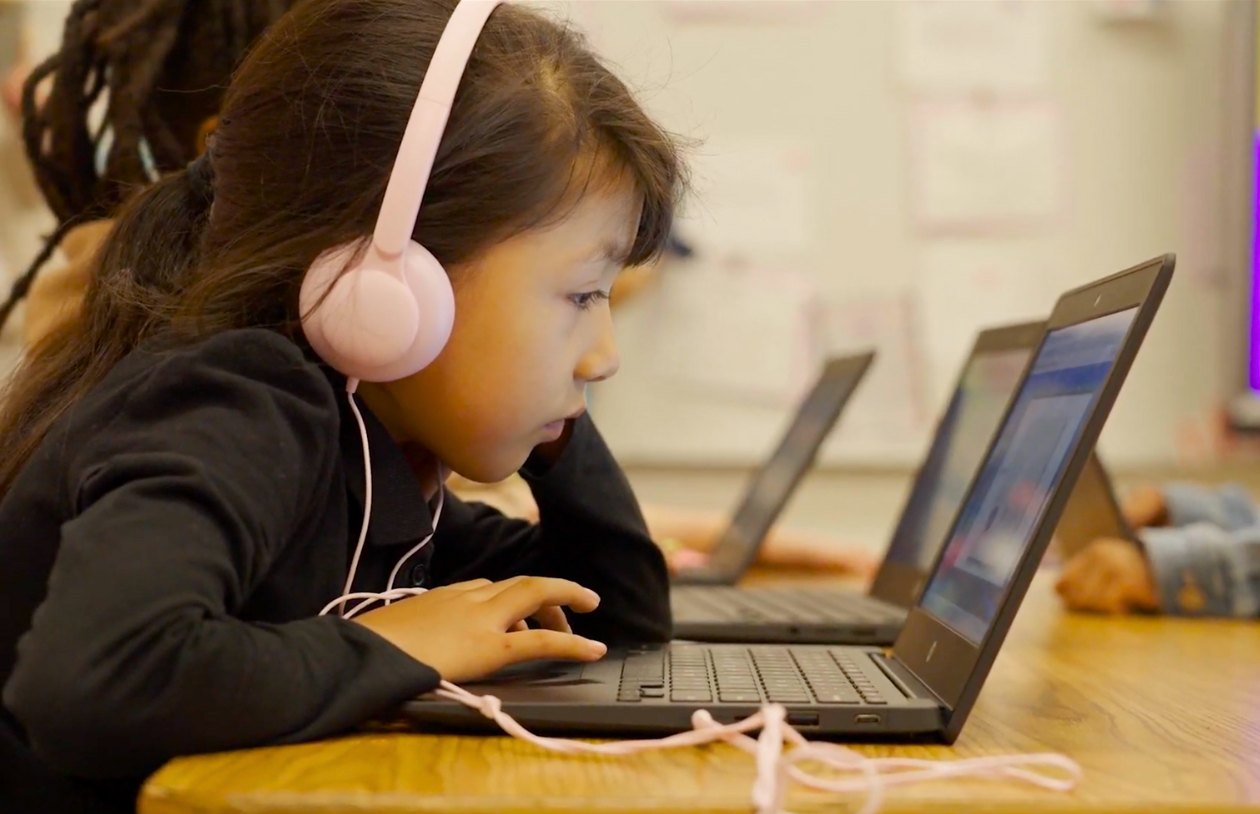Discover the Top 10 Must-Haves for Assessments

Get the Top 10 Assessment Must-Haves
Whether learning is taking place in person or remotely this year, every student will take assessments to determine their skill levels. Assessments are the starting point for measuring student growth and providing educators with insight for next steps.
Implementing the right assessment and progress-monitoring system can help transform your school or district. Consider these top-10 must-haves to get the most effective, efficient assessment tools for your school.
#1 Choose Valid and Reliable Assessments
Choose assessments that are based on scientific and independent research studies. Make sure they’ve gone through rigorous data reviews and have been normed. Ensure the assessments being considered have been designed for or tested in a remote-learning environment to meet the needs of students learning at home or school.
#2 Screen Students at Least 3 Times Per Year
It is crucial to know exactly where students stand, especially at the beginning of the year. That data will empower educators to build a plan of action and schedule progress monitoring.
#3 Progress Monitor Students Frequently
Whether using an MTSS framework model, an RTI model, or an RTI-squared model, it is important to progress monitor frequently. Progress monitoring shows the degree of support a student needs, as well as the effectiveness of the instruction and intervention provided.
#4 Streamline Assessment Tools
The assessment and progress-monitoring tools used should be the same across all tiers of instruction. This gives stakeholders at all levels the ability to share and interpret data in the same way and to streamline professional development.
#5 Support Flexibility
The assessments in place should support virtual and remote environments, as well as in-school and hybrid models, and show validity and reliability in those environments.
#6 Encourage Student Choice, Voice, and Agency
Assessments that are game-like keep students motivated. It’s important that students complete the assessments using progress-monitoring protocols, and if the assessments are engaging and fun, students (particularly young students) are more likely to complete them without the typical test-taking stress.
#7 Ensure Assessments are Device Agnostic
Ensure that whatever assessment and progress-monitoring tool being implemented can be used across many devices (PC, Mac, Chromebook, iOS, Android, etc.) to ensure equity for students across different levels of technological availability.
#8 Provide Immediate Results
Results should be available on-demand so that intervention and instruction plans can be developed and implemented. Fast, accurate, real-time data is a starting point for educators to plan what’s next.
#9 Save Teachers Time
Choose tools that are computer adaptive, that can be completed in approximately 30 minutes, and that provide real-time data. Computer-adaptive assessments save teachers valuable instructional time.
#10 Link to Instruction
Assessments should empower educators to make data-driven instructional decisions. Easy-to-read data that links to next steps is key to helping students get the personalized instruction they need to achieve powerful growth.
Share the top-10 assessment must-haves with this link.

Want to learn more about how to get powerful student growth with the right assessment tools? Download this FREE playbook today! Discover why educators may not be consistently using a systematic approach to formative assessment in their classrooms and offer teachers the right tools to ease implementation. Plus, explore how to encourage buy-in to help schools meet their goals.
Read more from the AI & The Reading Brain Blog


.avif)
